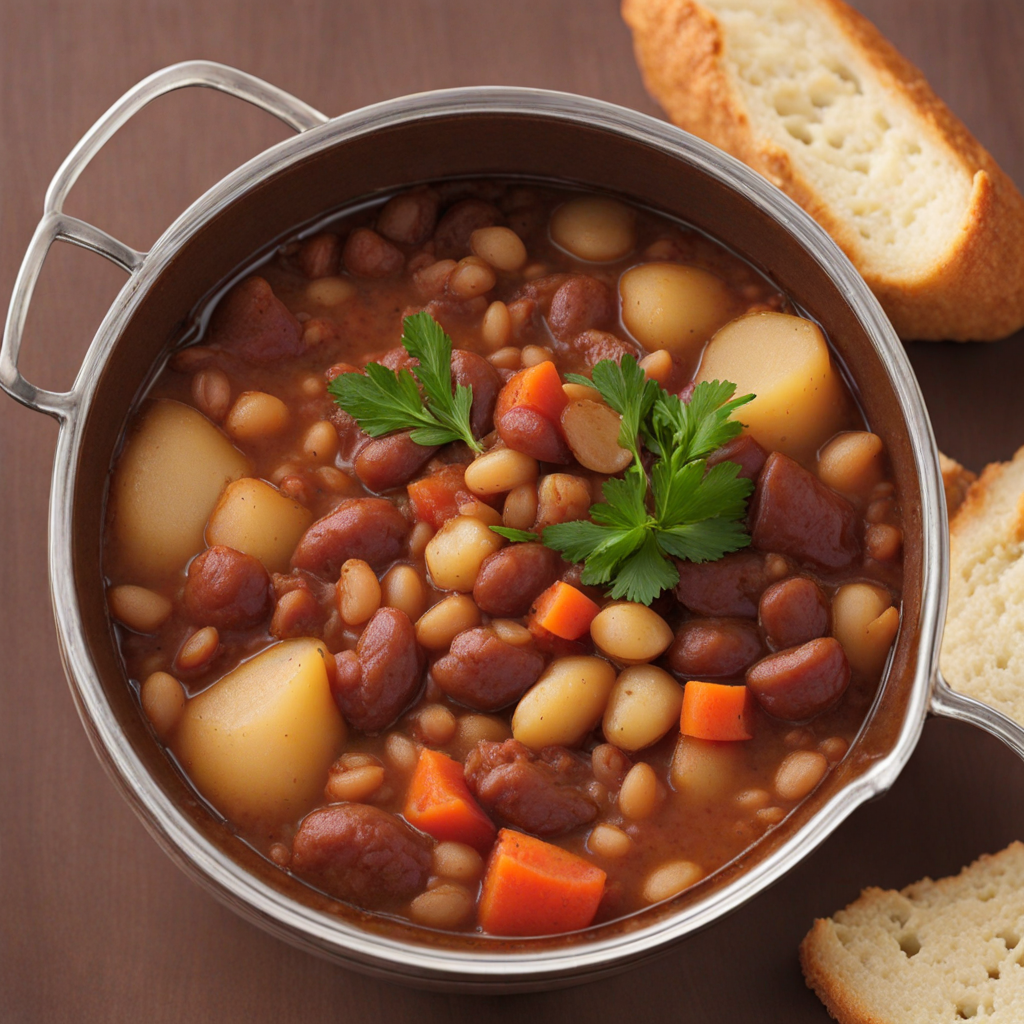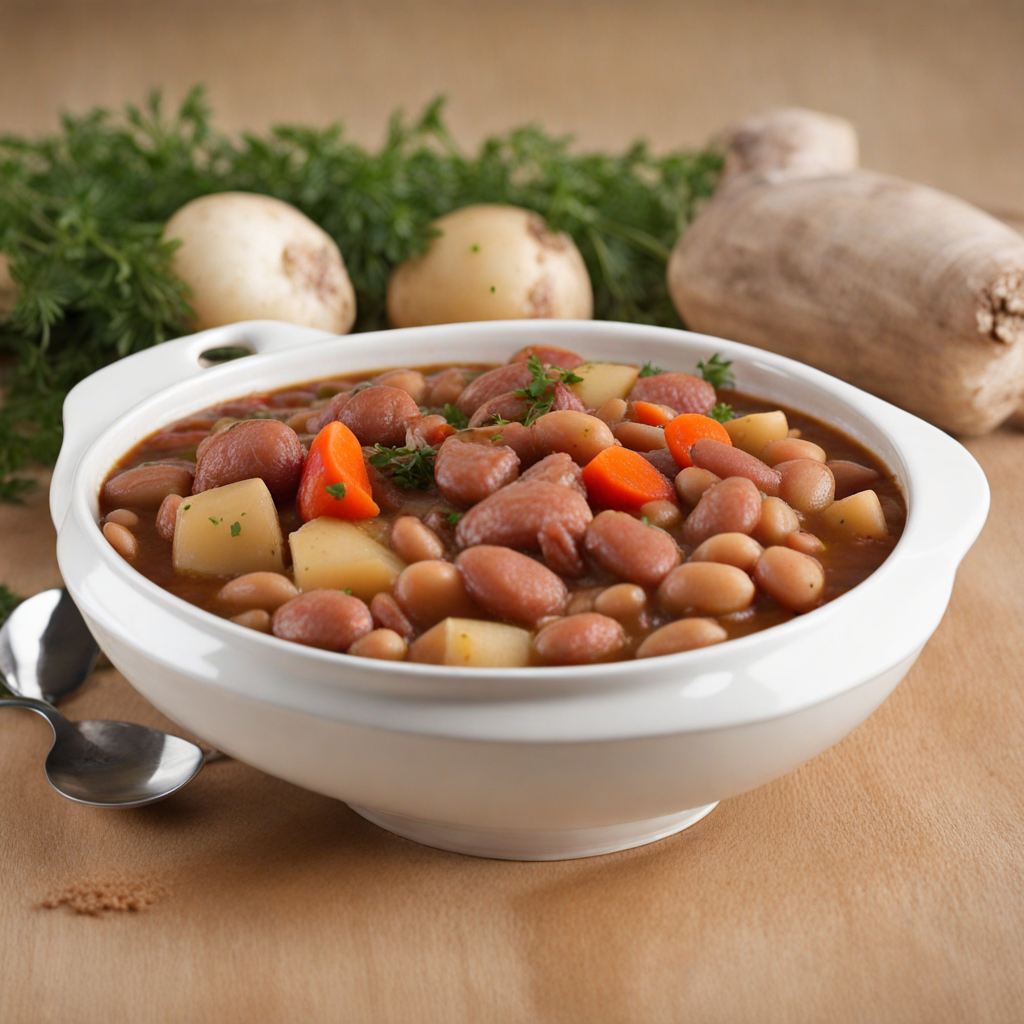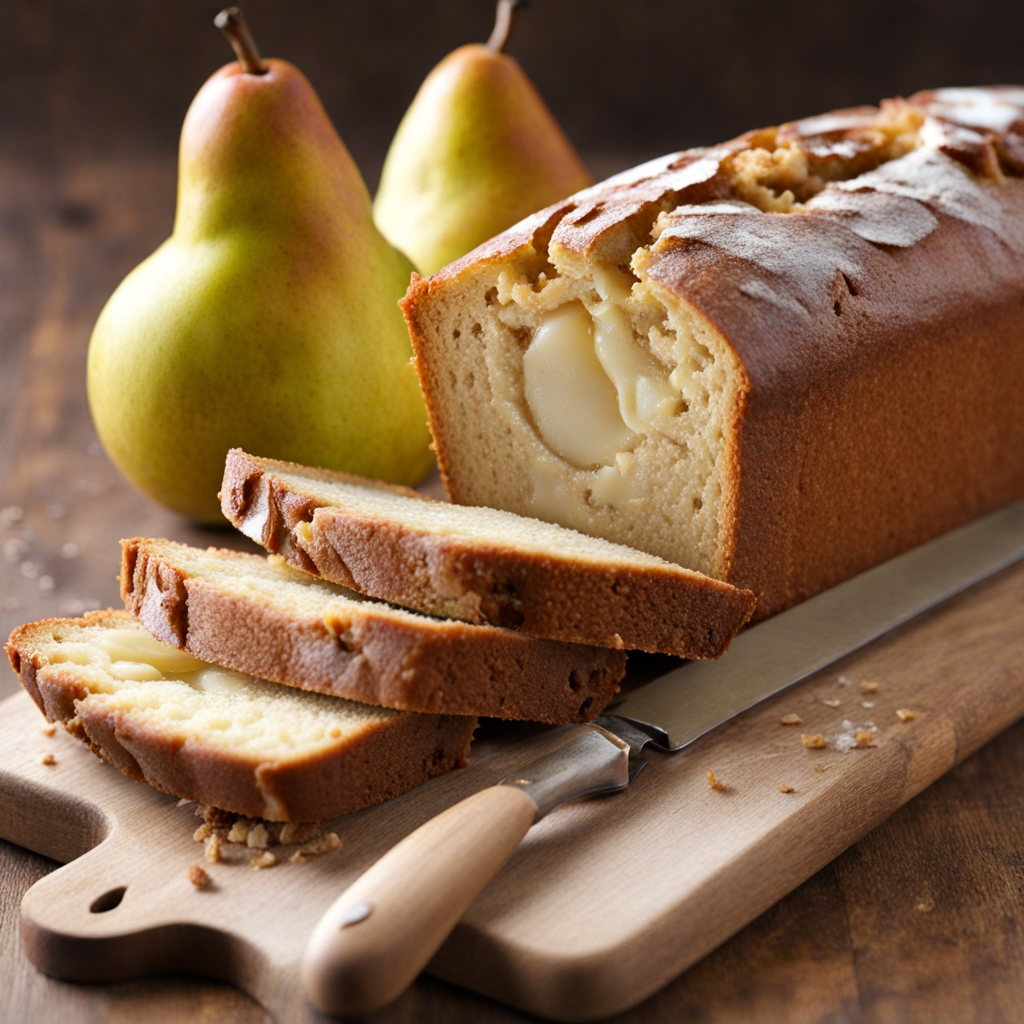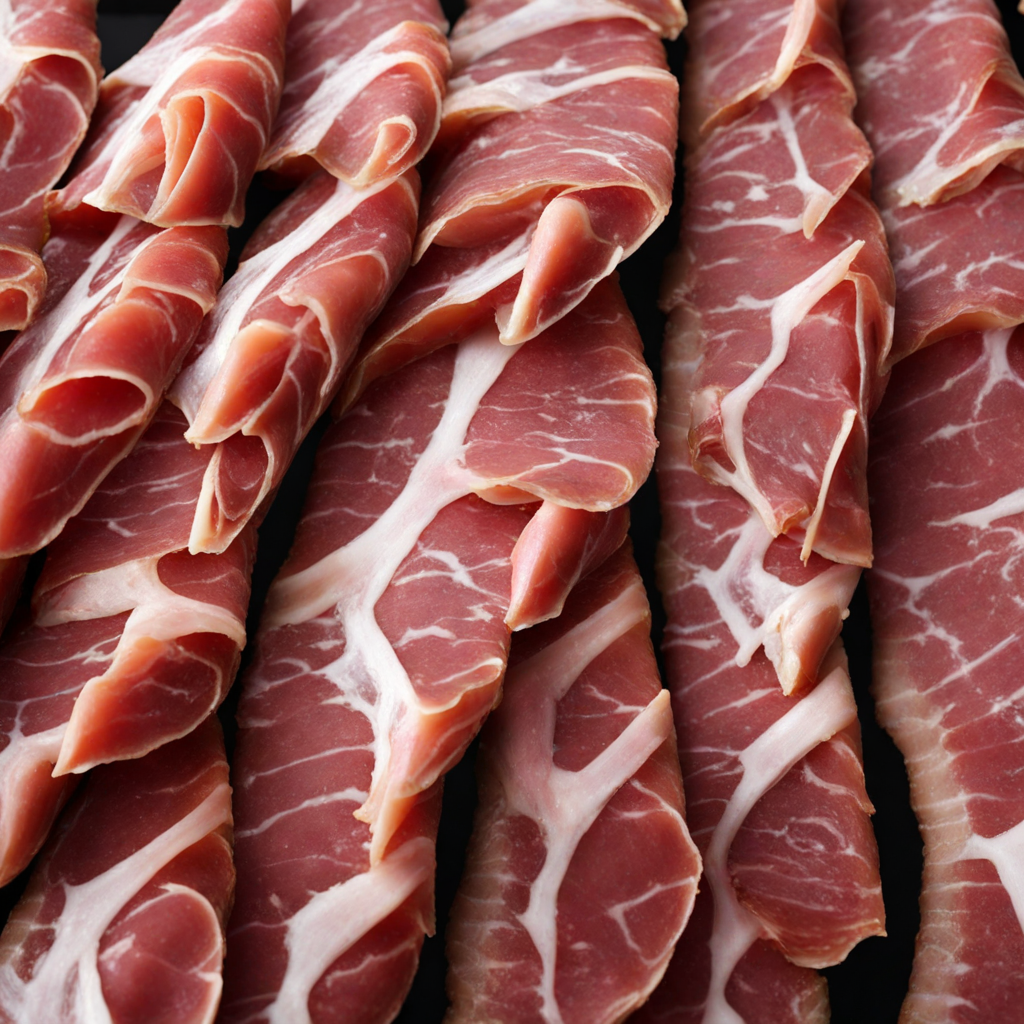Bean Stew
Bean Stew, or "Fiš" in Slovenian, is a hearty and comforting dish that showcases the country's rich culinary traditions. This delightful stew is primarily made with various types of beans, which are simmered to perfection along with an array of flavorful ingredients. The base usually consists of onions, garlic, and a medley of spices that include paprika, bay leaves, and sometimes a hint of caraway seeds. These components create a robust foundation that enhances the natural creaminess of the beans, making each spoonful a warming experience for the palate. One of the distinctive features of Slovenian Bean Stew is its adaptability. Depending on regional preferences and seasonal ingredients, cooks often add vegetables such as carrots, potatoes, and bell peppers, enriching the stew's texture and flavor profile. For a protein boost, smoked meats or sausage may also be included, imparting a smoky depth that complements the earthiness of the beans. This flexibility makes Bean Stew not only a versatile dish but also a canvas for showcasing the freshest local produce and meats available. Served with crusty bread or a dollop of sour cream on top, Bean Stew is more than just a meal; it’s a celebration of Slovenia's culinary heritage. The warmth of the stew embodies the spirit of Slovenian hospitality, inviting friends and family to gather around the table and enjoy a nourishing dish that transcends generations. Each bite captures a taste of Slovenia's lush landscapes and rich agricultural history, making it a must-try for anyone eager to explore new flavors.
How It Became This Dish
Fižolova Juha: A Culinary Journey through Slovenia Fižolova juha, or bean soup, is a cherished dish that embodies the culinary heritage of Slovenia. This hearty soup, primarily made from white or yellow beans, is a staple in Slovenian kitchens and represents a profound connection to the land, culture, and history of the Slovenian people. To understand the significance of Fižolova juha, one must explore its origins, cultural importance, and evolution over time, reflecting the agricultural traditions and communal values embedded in Slovenian society. Origins of Fižolova Juha The roots of Fižolova juha can be traced back to the agrarian lifestyle of early Slovenian settlers. Beans, particularly varieties such as the white kidney bean (known locally as "fižol"), have been cultivated in Slovenia for centuries. Archaeological evidence suggests that beans were domesticated in the Americas and brought to Europe in the 16th century following the Columbian Exchange. Slovenia, with its fertile soil and favorable climate, proved to be an ideal environment for bean cultivation. During the Middle Ages, beans became a staple food among the peasantry, primarily due to their nutritional value and ability to thrive in less fertile soil. They served as a significant source of protein in a diet that was otherwise reliant on grains and vegetables. Fižolova juha emerged as a practical dish, utilizing readily available ingredients, including beans, vegetables, and herbs. It was a simple yet nourishing meal that provided sustenance during long winters when fresh produce was scarce. Cultural Significance Fižolova juha is much more than just a meal; it is a cultural emblem that reflects the communal spirit of Slovenian life. Traditionally, this dish was prepared in large batches, often for family gatherings or community feasts. The act of making Fižolova juha became an occasion for socializing, where families would come together to share stories, laughter, and food. In Slovenian culture, food is a vehicle for expressing love and hospitality, and Fižolova juha exemplifies this ethos. In addition to its role in family life, Fižolova juha is also associated with various Slovenian festivities. For instance, during the harvest season, it was common for communities to celebrate with shared meals that included hearty soups like Fižolova juha, showcasing the fruits of their labor. Moreover, in religious contexts, bean soup has been served during Lent and other fasting periods, as it provided nourishment without the indulgence of meat. The dish has also found a place in Slovenian folklore and literature. Tales of farmers preparing Fižolova juha after a long day in the fields evoke a sense of nostalgia and connection to the land. The soup symbolizes resilience and resourcefulness, qualities that define the Slovenian spirit. Development Over Time As Slovenia transitioned through various historical periods, including the Austro-Hungarian Empire and Yugoslavia, the culinary landscape experienced changes that influenced traditional dishes, including Fižolova juha. The incorporation of new ingredients, cooking methods, and culinary influences from neighboring countries enriched the soup's flavor profile. In the 19th and early 20th centuries, the rise of urbanization and industrialization altered food consumption patterns. While many Slovenes moved to cities for work, they carried their culinary traditions with them. Fižolova juha remained a comforting reminder of home, often adapted to the available ingredients in urban settings. For instance, urban dwellers began to incorporate smoked meats or sausages into their recipes, adding depth to the flavor while maintaining the soup's essence. Post-World War II, Slovenia saw a resurgence of interest in traditional food as part of a broader movement to reclaim national identity and cultural heritage. Fižolova juha became a symbol of Slovenian pride, celebrated for its roots in local agriculture and community values. Cookbooks began to feature traditional recipes, and cooking classes emerged, emphasizing the importance of preserving Slovenian culinary heritage. In recent years, there has been a renewed focus on sustainable and local food practices, leading to a revival of traditional dishes like Fižolova juha. Chefs in Slovenia are increasingly sourcing local beans and produce, crafting versions of the soup that highlight seasonal ingredients. This movement not only respects the past but also encourages innovation, as chefs experiment with different spices, herbs, and cooking techniques while honoring traditional flavors. Modern Interpretations Today, Fižolova juha is enjoyed by Slovenians and visitors alike, often served in homes and restaurants across the country. The soup varies by region, reflecting local tastes and available ingredients. In some areas, it might be thickened with potatoes or enriched with the addition of smoked meats, while others might emphasize a vegetarian approach, highlighting the beans and vegetables. While traditional recipes remain popular, modern interpretations have emerged, catering to contemporary palates and dietary preferences. Vegan and gluten-free variations of Fižolova juha are now common, made with plant-based ingredients that retain the comforting essence of the original dish. This adaptability speaks to the dish's resilience and enduring popularity, ensuring that it remains relevant in Slovenia’s evolving culinary landscape. Conclusion Fižolova juha is more than just a nourishing bean soup; it is a reflection of Slovenian identity, culture, and history. From its humble beginnings as a sustenance food for rural communities to its status as a beloved national dish, Fižolova juha encapsulates the spirit of Slovenia—its connection to the land, the importance of family and community, and the celebration of culinary heritage. As Slovenia continues to embrace its past while forging a modern identity, Fižolova juha will undoubtedly remain a cherished dish, bridging generations and inspiring future culinary innovations. Whether enjoyed on a chilly winter evening or at a festive gathering, this soup carries with it the stories and traditions of a nation, serving as a delicious reminder of the power of food to unite and nourish.
You may like
Discover local flavors from Slovenia







